Germany's Oldest Villages and Timber-Framed Towns
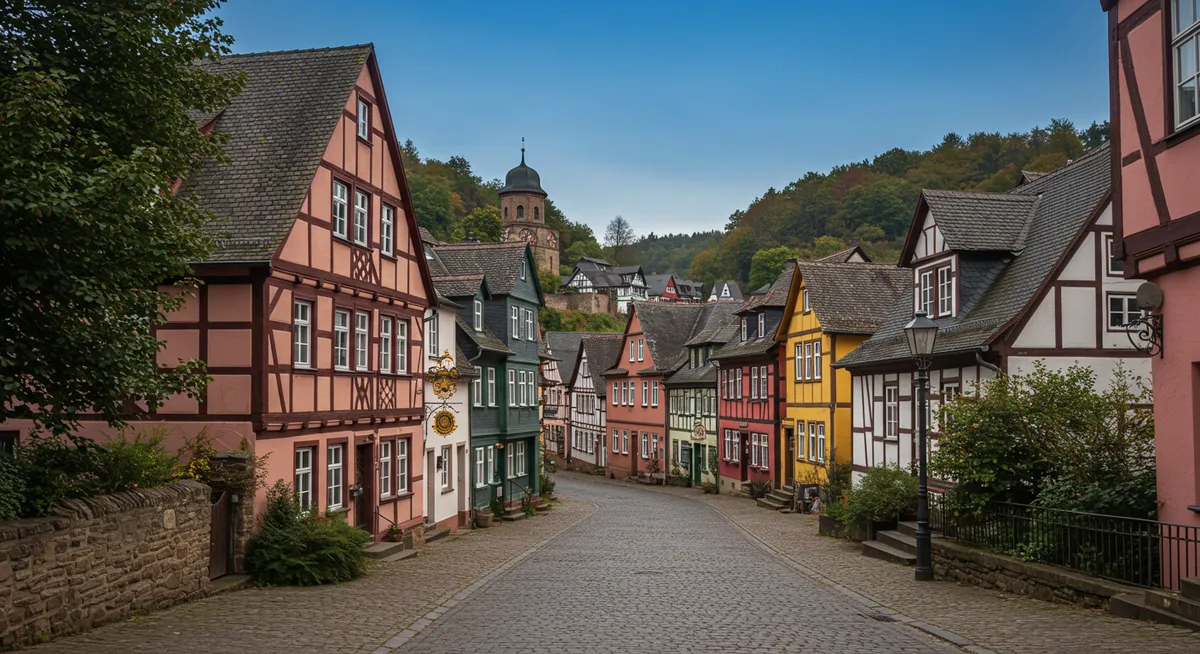
Germany's Oldest Villages and Timber-Framed Towns
Germany's countryside and smaller cities harbor extraordinary treasures of medieval and Renaissance architecture that survived the devastation of 20th-century wars. While modern glass and steel dominate the skylines of Munich and Berlin, numerous smaller settlements throughout the country preserve their historic cores with remarkable integrity. From the whimsical half-timbered towns of central Germany to the perfectly preserved walled cities of Bavaria, these living museums offer visitors authentic journeys into Germany's rich architectural and cultural heritage.

1. Rothenburg ob der Tauber: Germany's Medieval Miracle
Perched high above the Tauber River in northern Bavaria, Rothenburg ob der Tauber stands as perhaps the most perfectly preserved medieval walled town in all of Europe. Encircled by intact 14th-century walls complete with covered walkways and defensive towers, this extraordinary settlement contains an unparalleled collection of Gothic and Renaissance buildings. Despite its fame, Rothenburg maintains an authentic atmosphere, especially in the early morning or evening hours when the day-tripping crowds have departed.
What Makes It Special
- Complete Medieval Walls: The 3.5km defensive wall circuit with its gates and towers remains entirely intact
- Architectural Preservation: Over 500 years of virtually unchanged buildings, with many dating from the 13th-16th centuries
- Market Square Ensemble: The central Marktplatz features an extraordinary collection of iconic German Gothic buildings
- Christmas Heritage: Home to the renowned Käthe Wohlfahrt Christmas store and the Christmas Museum, celebrating year-round Yuletide traditions
Historic Significance
Founded in the 12th century, Rothenburg grew wealthy as an Imperial Free City and major trading center during the Middle Ages. The town reached its golden age in the 1400s when its population of 6,000 made it one of Germany's largest cities. Economic decline following the Thirty Years' War (1618-1648) froze the town's development, inadvertently preserving its medieval character. While most German cities were heavily damaged during World War II, Rothenburg was largely spared due to its cultural significance and the personal intervention of American Assistant Secretary of War John J. McCloy, who knew of the town's historic importance.
What to Experience
Walk the complete circuit of medieval walls for panoramic views of the town and surrounding countryside. Visit the Town Hall (Rathaus) with its 52-meter tower offering spectacular vistas. Step into St. Jacob's Church to view the masterful Holy Blood Altar carved by Tilman Riemenschneider. Explore the Medieval Crime Museum with its fascinating collection of punishment devices and legal history. Stay overnight to experience the enchanting atmosphere of the illuminated streets on the Night Watchman's Tour, when the town belongs once again to its residents.
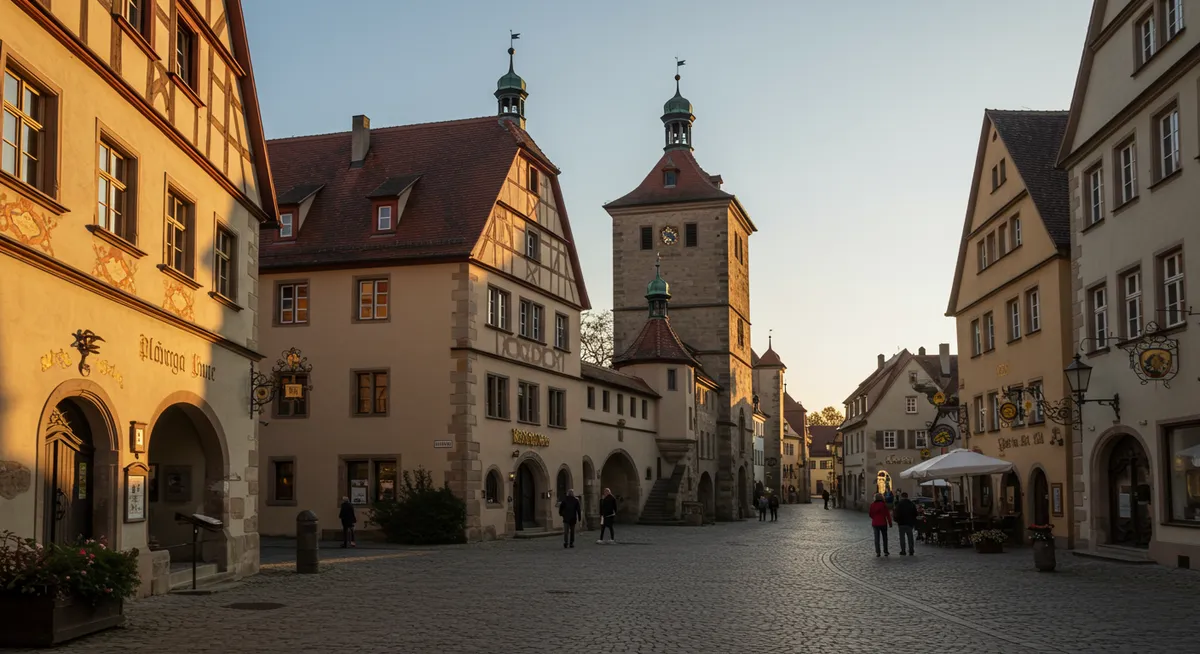
2. Dinkelsbühl: Rothenburg's Authentic Cousin
Often overshadowed by its more famous neighbor Rothenburg, Dinkelsbühl offers a similarly spectacular medieval experience with a fraction of the crowds. Located along the Romantic Road in Bavaria, this former Imperial Free City is surrounded by well-preserved 16th-century walls interspersed with 18 towers and four gates. Inside, colorful Gothic and Renaissance buildings line cobblestone streets, creating an authentic atmosphere that many consider even more genuine than its better-known counterpart.
What Makes It Special
- Authentic Atmosphere: Offers a perfectly preserved medieval environment without the tourist crowds of more famous towns
- Colorful Architecture: Distinctive red, orange, yellow, and green half-timbered and stone buildings create a vibrant townscape
- St. George's Church: Contains one of Germany's finest late Gothic hall churches with exceptional 15th-century artwork
- Living Heritage: Still functions as a working town where regular citizens live within medieval buildings
Historic Significance
Founded in the 8th century and granted city rights in the 13th century, Dinkelsbühl flourished as an Imperial Free City answerable only to the Emperor. The town's key position on trade routes between Nuremberg and Augsburg brought prosperity, financing the construction of impressive defensive works and civic buildings. During the Thirty Years' War, Dinkelsbühl uniquely maintained neutrality, being occupied alternately by Catholic and Protestant forces without destruction. The town's annual "Kinderzeche" festival commemorates its legendary salvation in 1632 when local children supposedly begged a Swedish general to spare the town.
What to Experience
Stroll the remarkably intact city walls and climb several of the watchful towers that still guard the town. Visit the magnificent St. George's Church, a masterpiece of late Gothic architecture with an important Altar of the Holy Cross. Explore the Deutsches Haus, considered one of Germany's most beautiful half-timbered buildings, with its elaborate carvings and oriel windows. Attend the Kinderzeche historical festival held every July, featuring participants in historical costumes reenacting events from the Thirty Years' War.
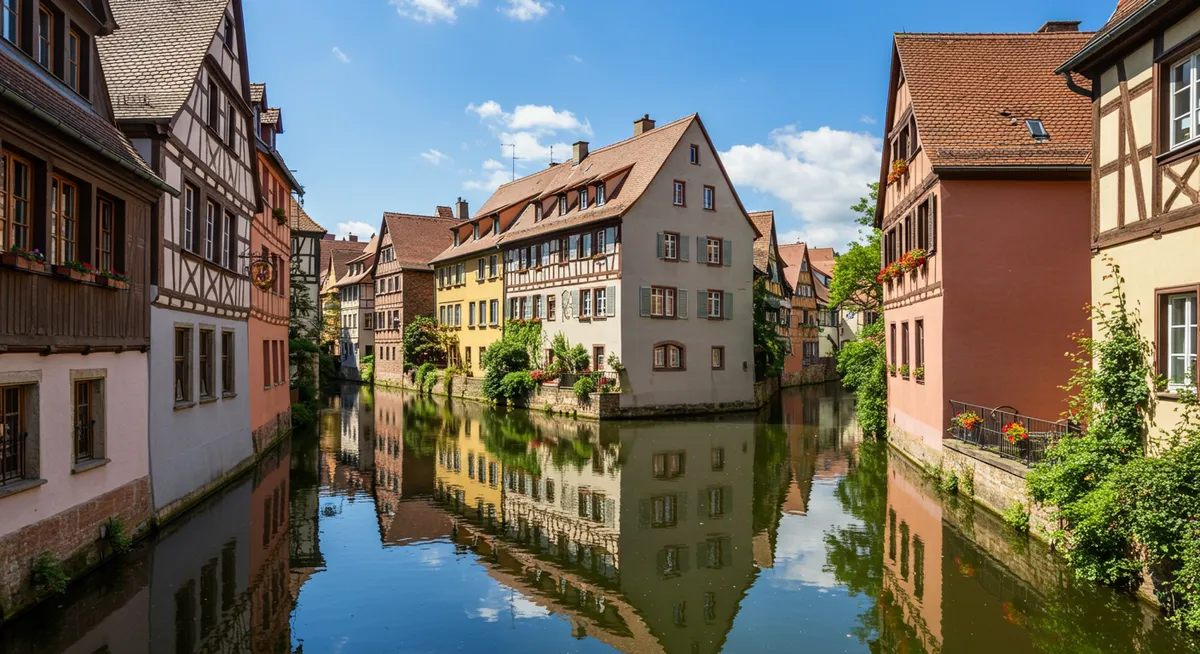
3. Freudenberg: The Perfect Timber-Framed Ensemble
For pure fairy-tale charm and photogenic appeal, few German villages can match the small town of Freudenberg in North Rhine-Westphalia. Its spectacular "Alter Flecken" (Old Spot) district presents a remarkably uniform row of nearly identical timber-framed houses creating a geometric pattern that seems almost unreal in its precision and beauty. This extraordinary ensemble, set against forested hills with a castle ruin looming above, offers one of Germany's most distinctive historic townscapes.
What Makes It Special
- Unique Uniformity: Features an unparalleled row of near-identical half-timbered houses from the 17th century
- Geometric Harmony: The buildings' similar shapes, heights, and timber patterns create an extraordinary visual rhythm
- Baroque Reconstruction: Rebuilt in a consistent style after a devastating fire in 1666, creating the uniform appearance
- Castle Backdrop: The ruins of Freudenberg Castle provide a romantic backdrop on the hill above town
Historic Significance
Freudenberg's history dates to the 11th century when the castle was constructed to secure the territory of the Counts of Berg. The settlement below developed as a market town, but its extraordinary current appearance results from tragedy—a massive fire in 1666 destroyed most of the town. The subsequent rebuilding followed a remarkably consistent plan, with identical timber-framed houses constructed side by side, their white walls and dark wooden beams creating the striking pattern visible today. This planned reconstruction represents an early example of consistent urban design principles.
What to Experience
Photograph the extraordinary "Old Spot" district from various angles, capturing the geometric harmony of the identical façades with their symmetrical timber patterns. Explore the interiors of several historic buildings that now house museums, restaurants, and craft shops. Hike up to the ruins of Freudenberg Castle for panoramic views of the town and surrounding Siegerland region. Visit the local Technikmuseum housed in a former leather factory, showcasing the town's industrial heritage.
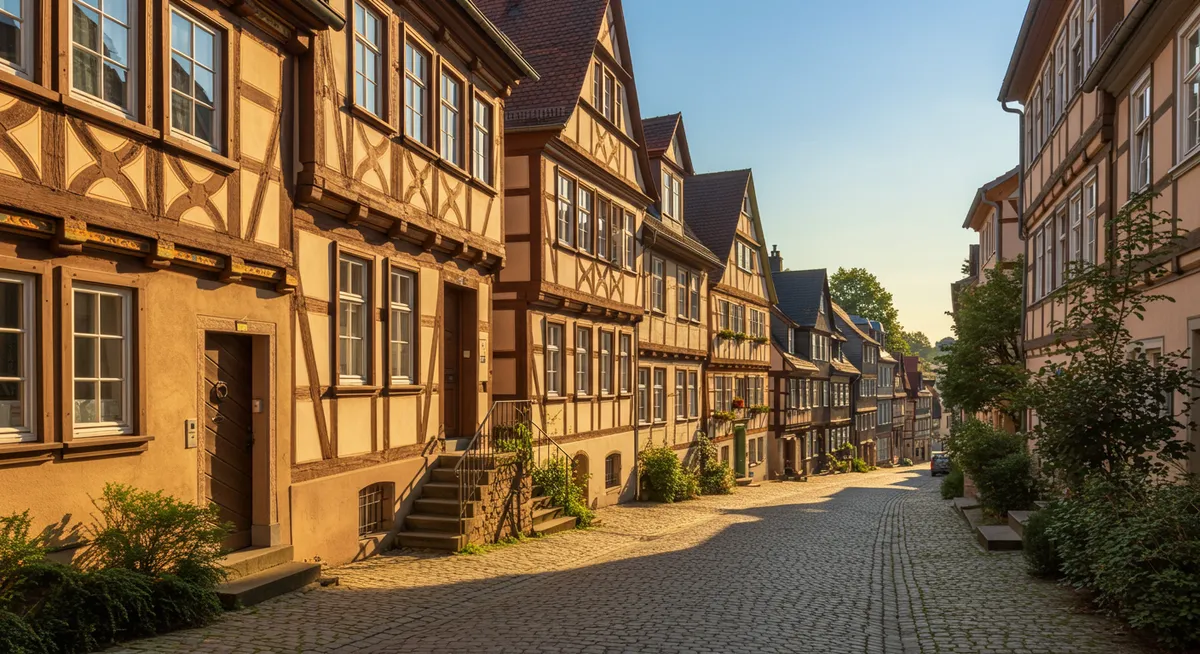
4. Quedlinburg: Thousand-Year-Old Treasure
Nestled at the northern edge of the Harz Mountains in Saxony-Anhalt, Quedlinburg boasts one of Europe's largest collections of historic timber-framed buildings. This UNESCO World Heritage Site contains over 1,300 half-timbered houses spanning six centuries of architectural evolution, all watched over by the imposing Romanesque Collegiate Church on Castle Hill. Having escaped significant damage in both World Wars, Quedlinburg offers visitors an unparalleled journey through the development of Central European urban architecture.
What Makes It Special
- Architectural Timeline: Contains half-timbered buildings from every century from the 14th to the 19th, showing the evolution of the style
- UNESCO Recognition: The entire town center is a World Heritage Site with over 1,300 protected structures
- Imperial Heritage: Founded as an imperial residence by King Heinrich I, with the Romanesque Collegiate Church containing the tombs of German royalty
- Art Nouveau Details: Many buildings feature unexpected Jugendstil (Art Nouveau) decorative elements added during a period of prosperity around 1900
Historic Significance
Quedlinburg's history begins in 922 CE when King Heinrich I (Henry the Fowler) built his royal residence here, establishing it as an important center of power in the early German Empire. After his death, his widow Mathilde founded a religious women's community that developed into the powerful Quedlinburg Abbey, whose abbesses were imperial princesses ruling extensive territories. The town flourished as a trading center through the Middle Ages and Renaissance, resulting in the construction of magnificent buildings. Unlike many German cities, Quedlinburg escaped major war damage and communist-era redevelopment, preserving its extraordinary architectural heritage.
Planning Your German Historic Village Tour
Germany's historic villages offer some of Europe's best-preserved medieval and Renaissance architecture. Consider these themed itineraries to explore the country's rich architectural heritage:
- Romantic Road Journey: Follow the famous tourist route that connects Rothenburg and Dinkelsbühl with other historic towns like Nördlingen and Füssen
- Timber-Frame Trail: Experience the evolution of half-timbered architecture by comparing the uniform style of Freudenberg with the diverse buildings of Quedlinburg
- Medieval Fortifications Tour: Focus on Germany's best-preserved walled towns, starting with Rothenburg and exploring other fortified settlements
- Historical Trade Routes: Follow ancient merchant paths connecting these historic trading centers that once formed part of important commercial networks
Travel Tip: Many German historic villages are particularly magical during the Christmas season (late November through December), when traditional markets fill the medieval squares. For fewer crowds but equally beautiful experiences, consider visiting in May or September when weather is pleasant and most historic sites are fully operational.
Related Content
If you're fascinated by Germany's historic villages, you might also enjoy these related articles:

Germany's Fairytale Towns That Tourists Haven't Found Yet
Discover enchanting German towns with half-timbered houses, medieval castles, and cobblestone streets without the tourist crowds.

10 Best Preserved Medieval Villages in France
Explore France's most breathtaking medieval villages, from Pérouges to Rocamadour and the historic walls of Carcassonne.
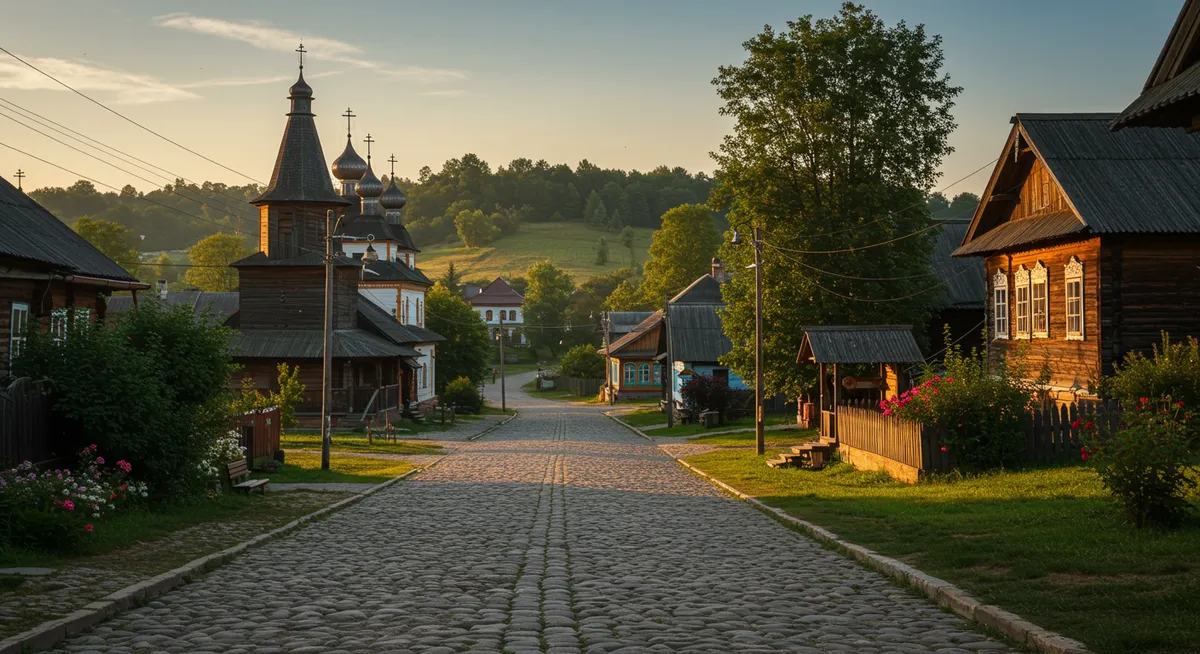
Timeless Villages in Eastern Europe You Should See
Discover Eastern Europe's most fascinating historic villages, from Romania's Saxon settlements to Bulgaria's ancient Plovdiv.
Explore More Historic & Hidden Gem Villages
Discover more extraordinary villages across Europe and beyond.